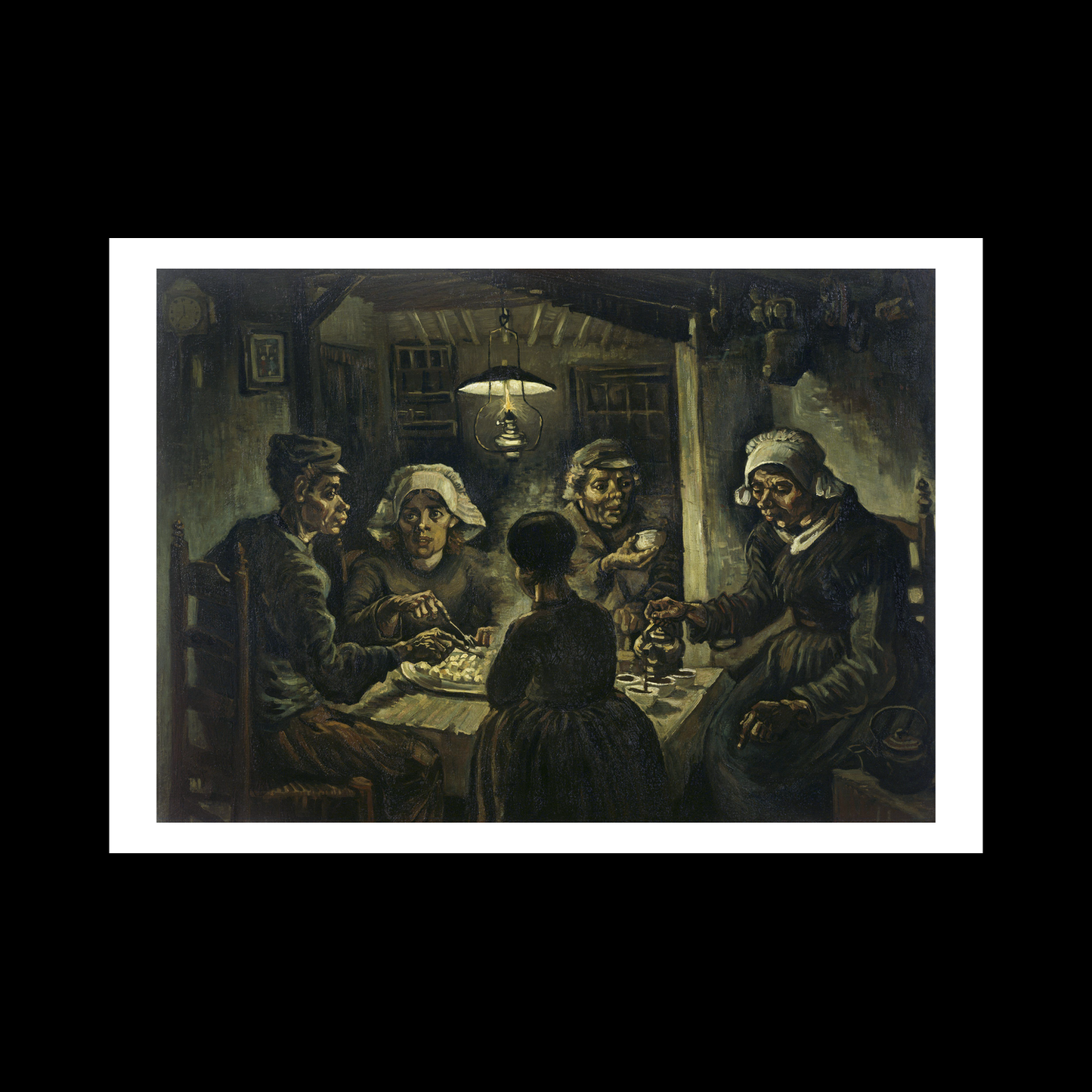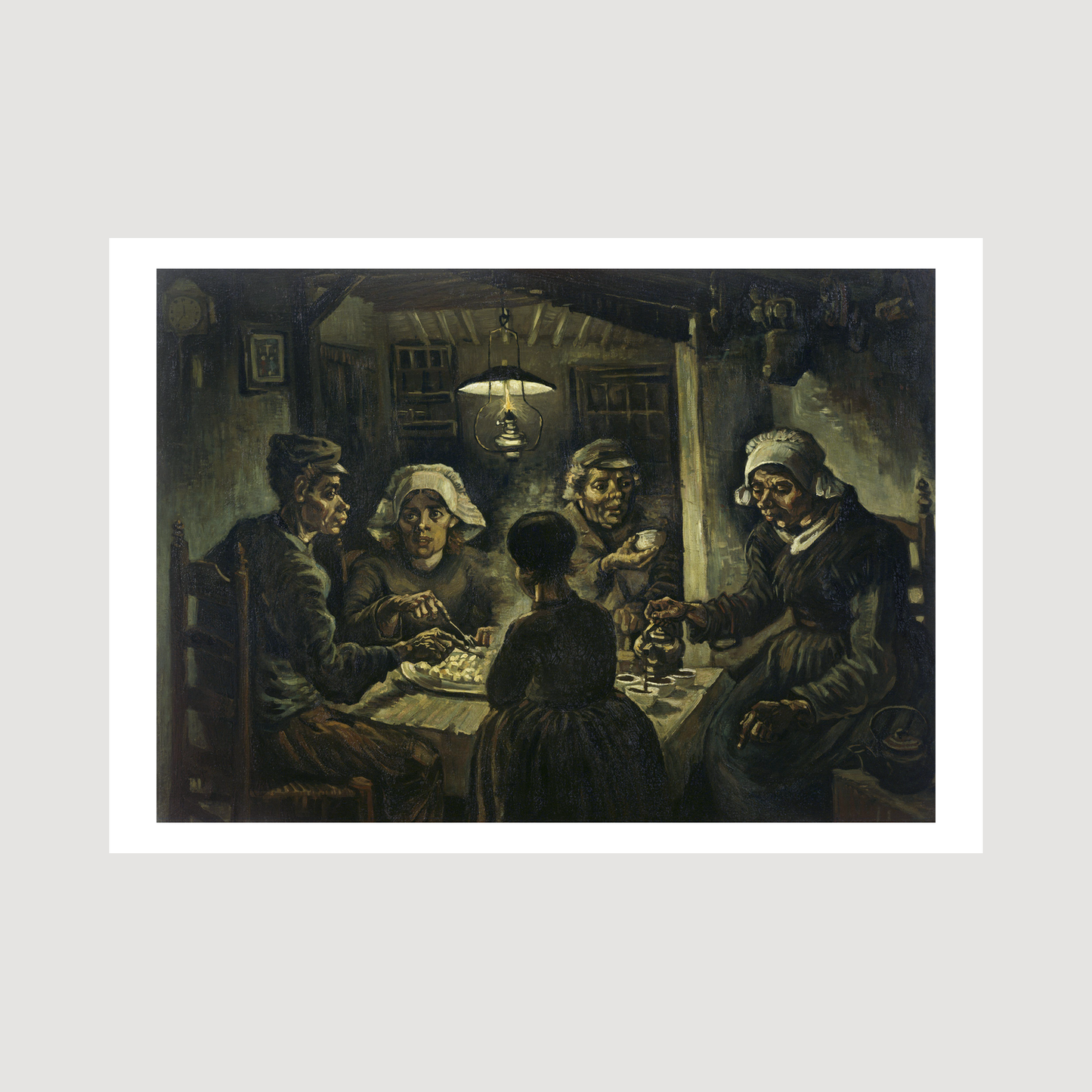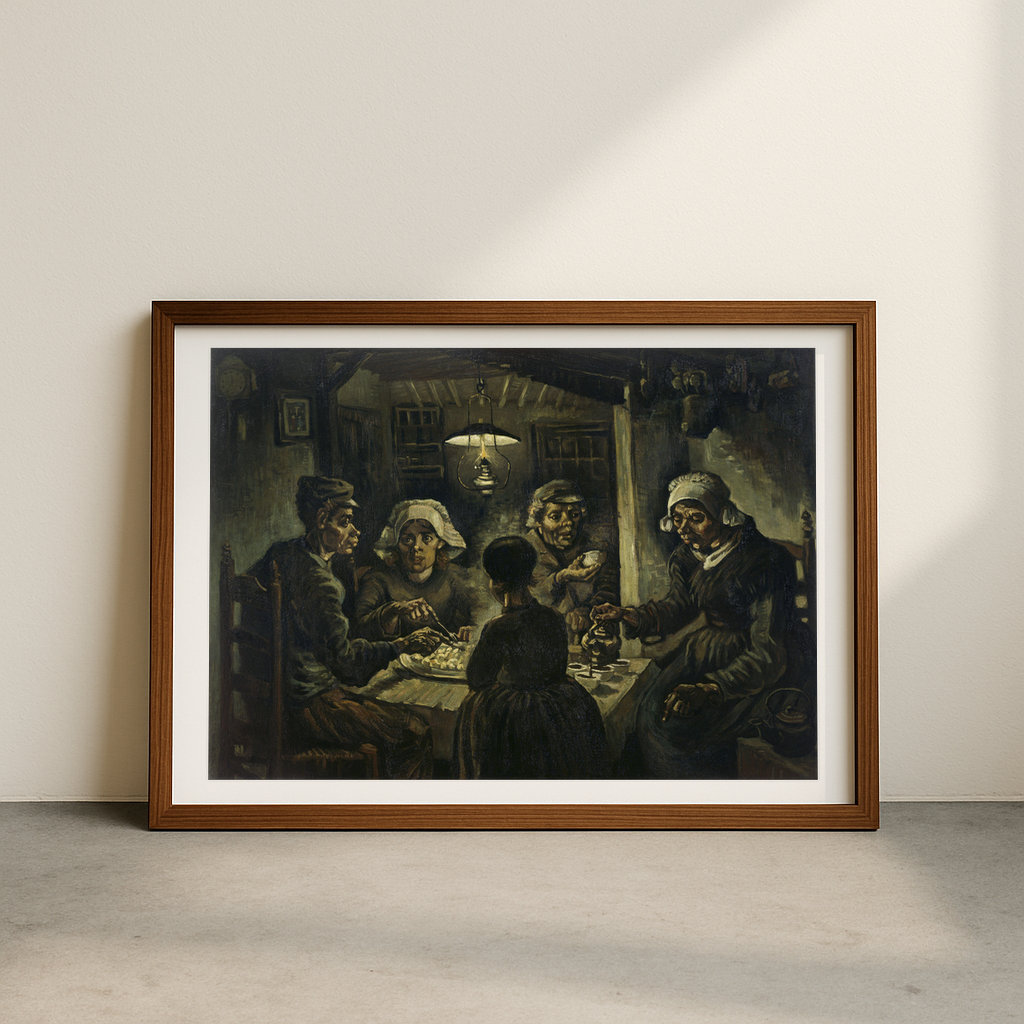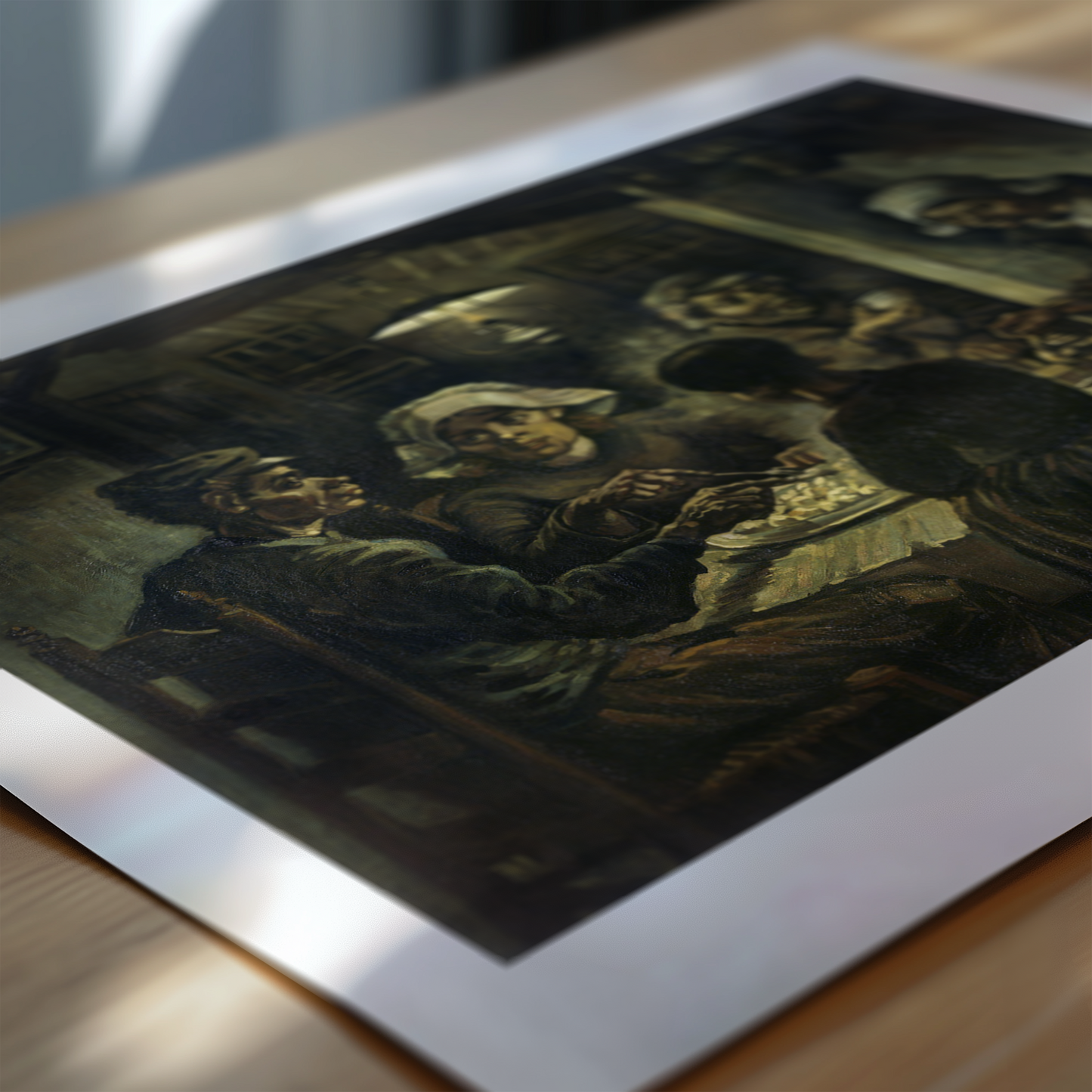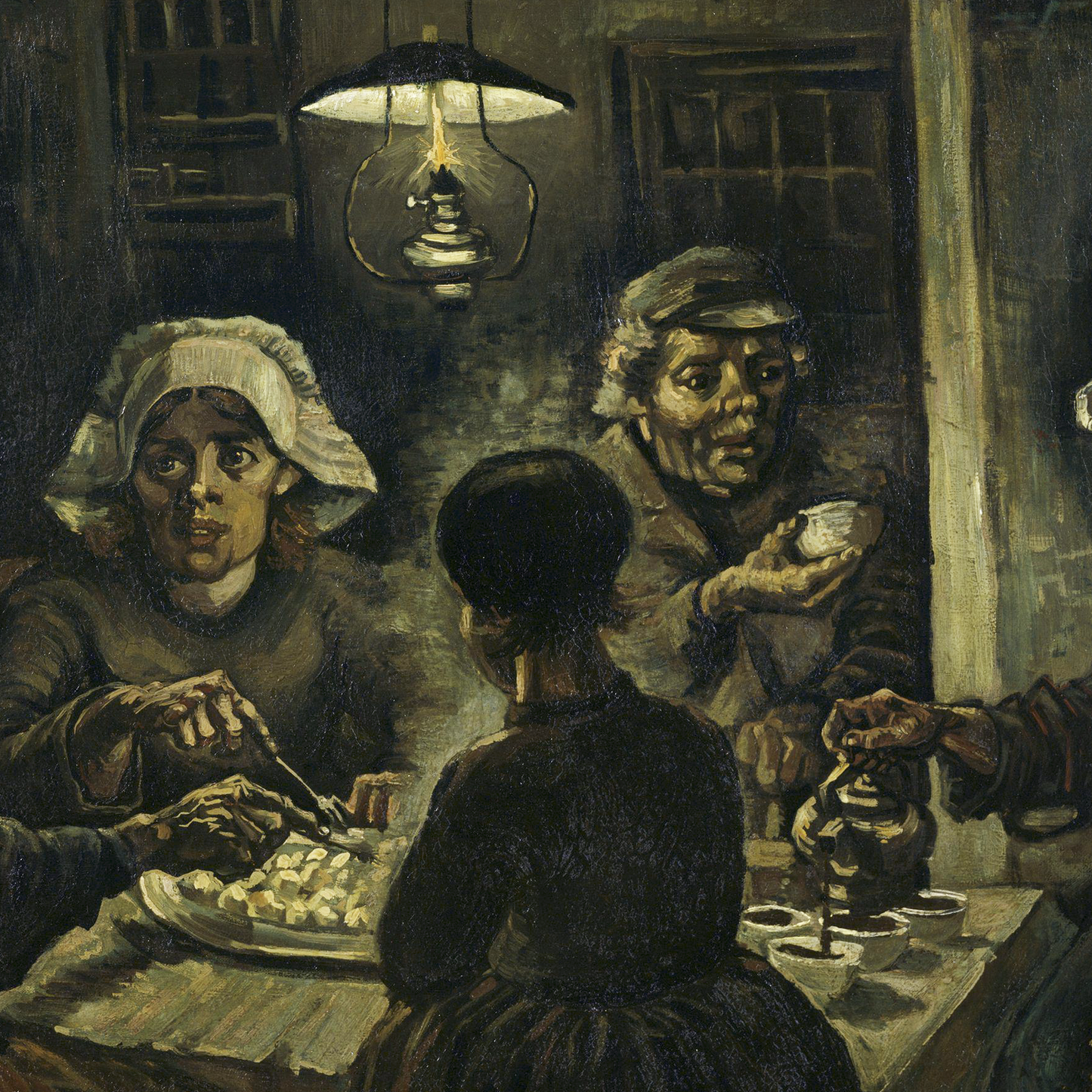1
/
of
6
Potato Eaters
Potato Eaters
Regular price
£12.45 GBP
Regular price
Sale price
£12.45 GBP
Taxes included.
Quantity
Couldn't load pickup availability
Vincent van Gogh's "The Potato Eaters" stands as one of his earliest major works, depicting five peasants sharing a humble meal of potatoes by lamplight. The dark, earthy palette and rough brushwork create a moody atmosphere, emphasising the harsh reality of rural life in the Dutch village of Nuenen. Van Gogh deliberately chose coarse features and working hands for his subjects, believing that manual labour should be celebrated rather than idealised.
The painting emerged from Van Gogh's deep connection with peasant life, spending months sketching and living among the rural poor. He made numerous preparatory drawings, determined to capture the dignity of farm workers despite their challenging circumstances. The artist wrote to his brother Theo that he wanted to convey how these people "used the same hands with which they take food from their plates to dig the earth," highlighting the raw authenticity he sought to achieve.
The composition's technical elements reveal Van Gogh's early artistic development. The single overhead lamp creates dramatic chiaroscuro effects, casting deep shadows that echo Rembrandt's influence. Though criticised for its dark tonality and seemingly unrefined execution, the work represents a crucial turning point in Van Gogh's career. It demonstrates his emerging style and unwavering commitment to depicting the human condition with empathy and depth, years before his signature bright colours and expressive brushwork would emerge in his later works.
This painting marked a pivotal moment in Van Gogh's artistic journey, reflecting his belief that art should capture life's fundamental truths rather than mere surface beauty. Despite receiving harsh criticism when first exhibited, it remains a powerful representation of rural poverty and human dignity in late 19th-century Europe.
View full details
The painting emerged from Van Gogh's deep connection with peasant life, spending months sketching and living among the rural poor. He made numerous preparatory drawings, determined to capture the dignity of farm workers despite their challenging circumstances. The artist wrote to his brother Theo that he wanted to convey how these people "used the same hands with which they take food from their plates to dig the earth," highlighting the raw authenticity he sought to achieve.
The composition's technical elements reveal Van Gogh's early artistic development. The single overhead lamp creates dramatic chiaroscuro effects, casting deep shadows that echo Rembrandt's influence. Though criticised for its dark tonality and seemingly unrefined execution, the work represents a crucial turning point in Van Gogh's career. It demonstrates his emerging style and unwavering commitment to depicting the human condition with empathy and depth, years before his signature bright colours and expressive brushwork would emerge in his later works.
This painting marked a pivotal moment in Van Gogh's artistic journey, reflecting his belief that art should capture life's fundamental truths rather than mere surface beauty. Despite receiving harsh criticism when first exhibited, it remains a powerful representation of rural poverty and human dignity in late 19th-century Europe.
